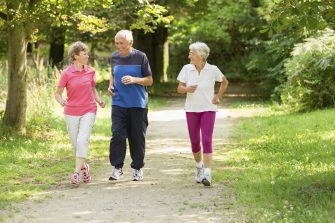The Importance of Good Posture for Middle-Aged and Elderly People
 According to a recent study, authors investigated how certain spinal factors, body balance, muscle strength and gait speed influence falling in elderly and middle-aged people.
According to a recent study, authors investigated how certain spinal factors, body balance, muscle strength and gait speed influence falling in elderly and middle-aged people.
The subjects consisted of 100 males, who underwent a basic health checkup. In the examination, the fall history over the previous year was examined, along with balance, 10-m gait time/speed (physical ability), grip strength, back muscle strength and body mass index. The study also included a lateral lumbar spine radiograph to determine the spinal range of motion and curvature of the spine.
Authors concluded that good sagittal alignment, muscle strength and physical ability were associated with reduced risk of falling, and that poor posture, reduced strength, and other functional shortcomings were seen more prominently in the ‘falling’ group.
Body balance training, improvement of physical abilities including muscle training, and maintaining spinal sagittal alignment can lead to prevention of falls in middle-aged and elderly people.
As primary care professionals for spinal health and well-being, doctors of chiropractic – who receive a minimum of seven years of higher education –can help to correct poor postural habits and suggest appropriate techniques that aid in the improvement of proper body mechanics and overall health.